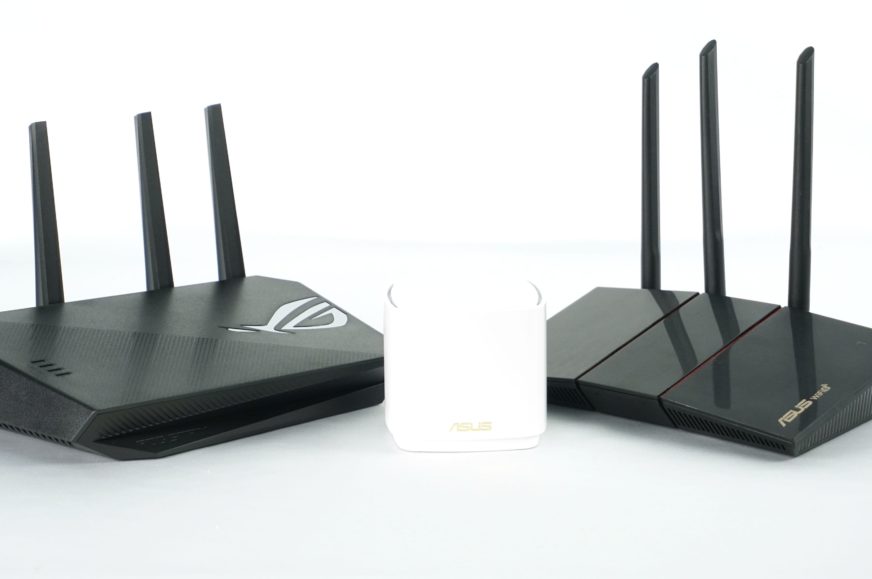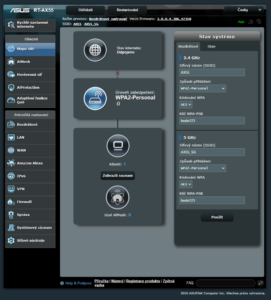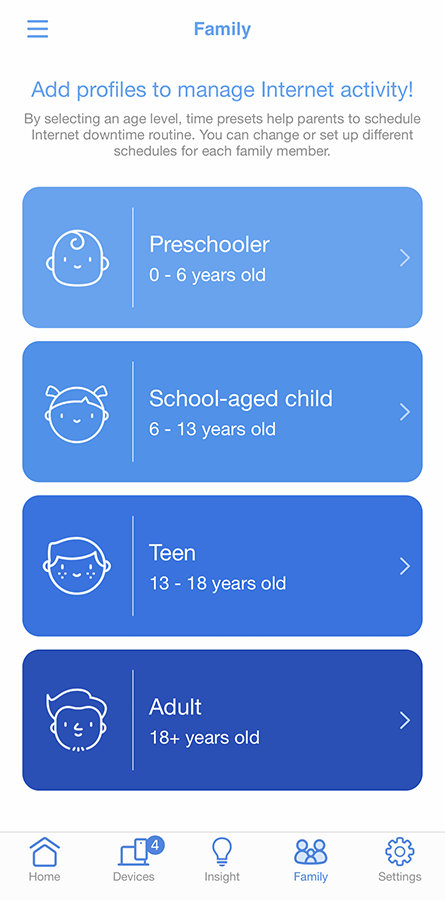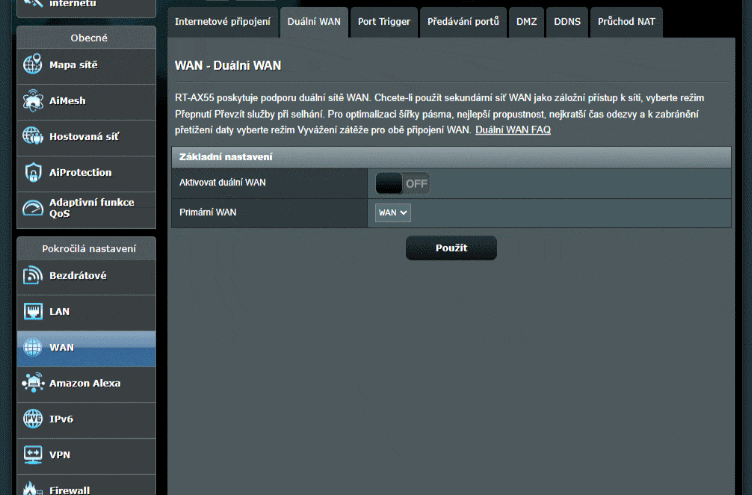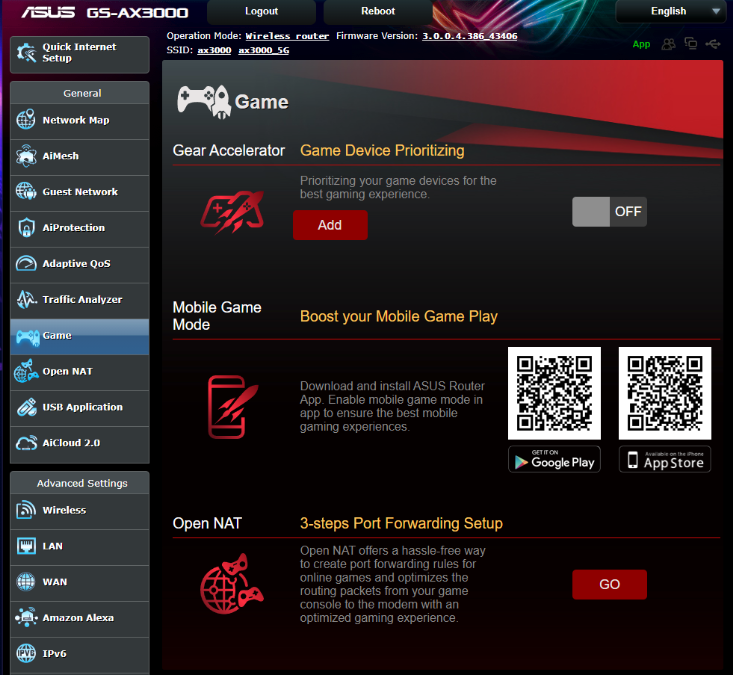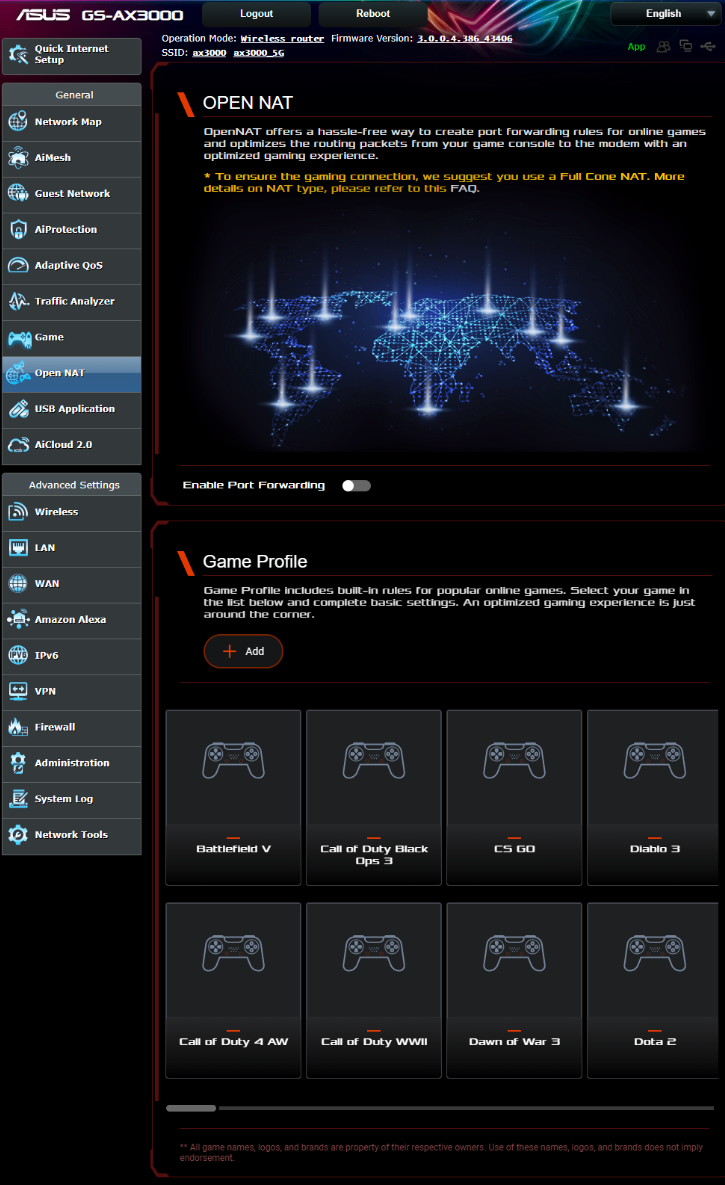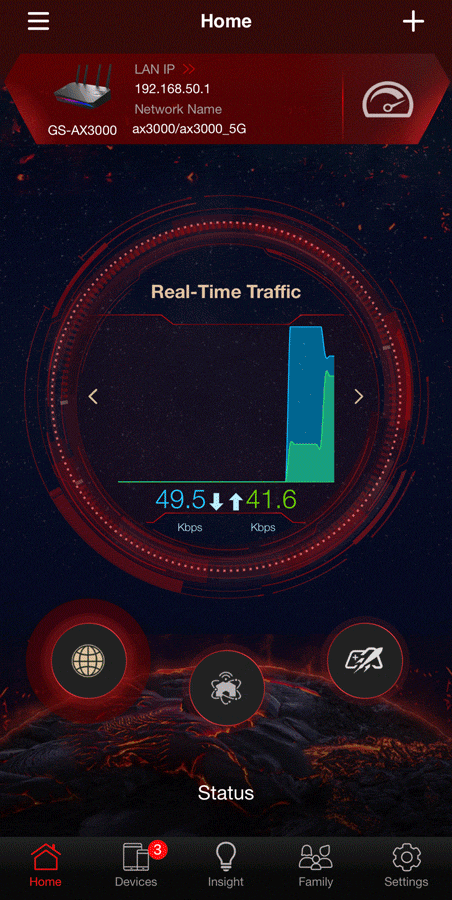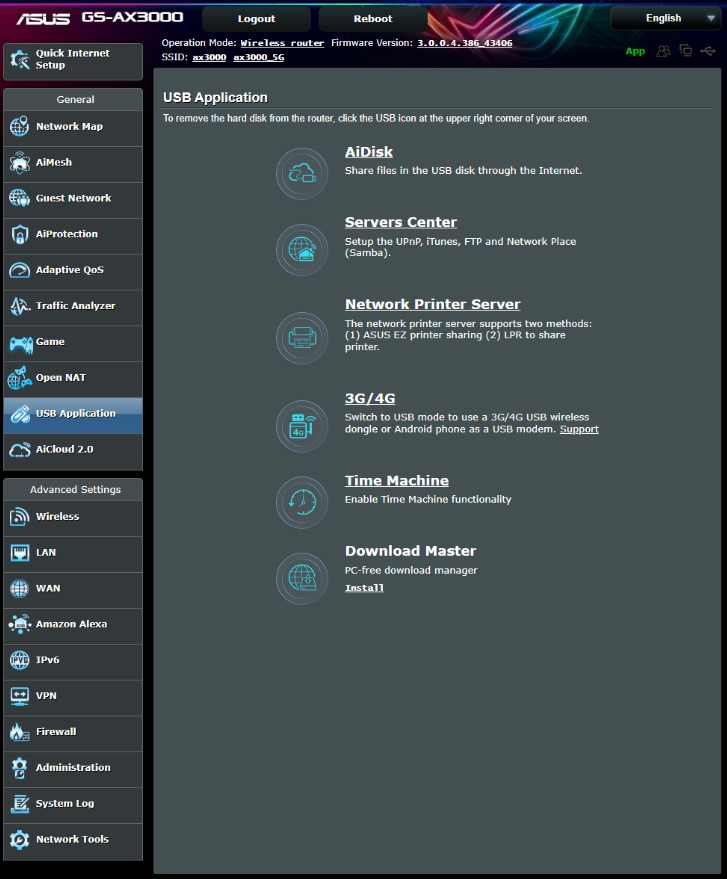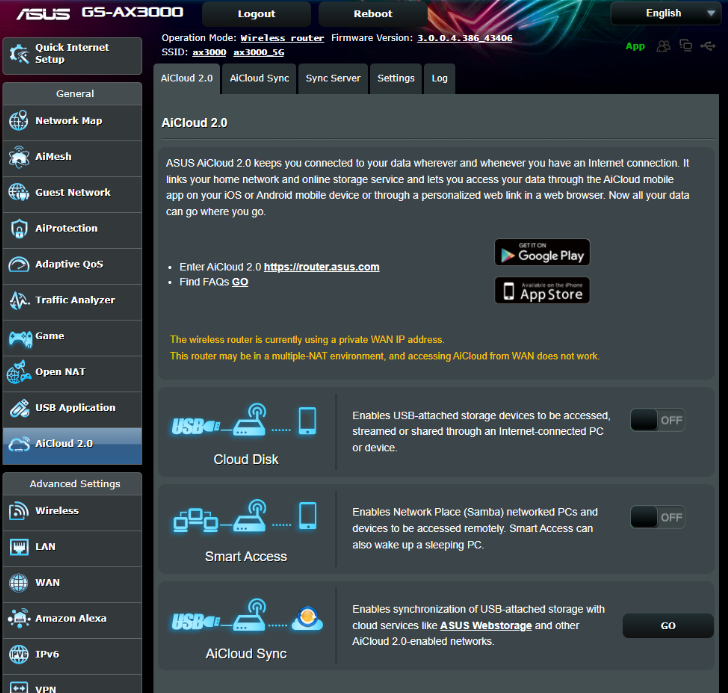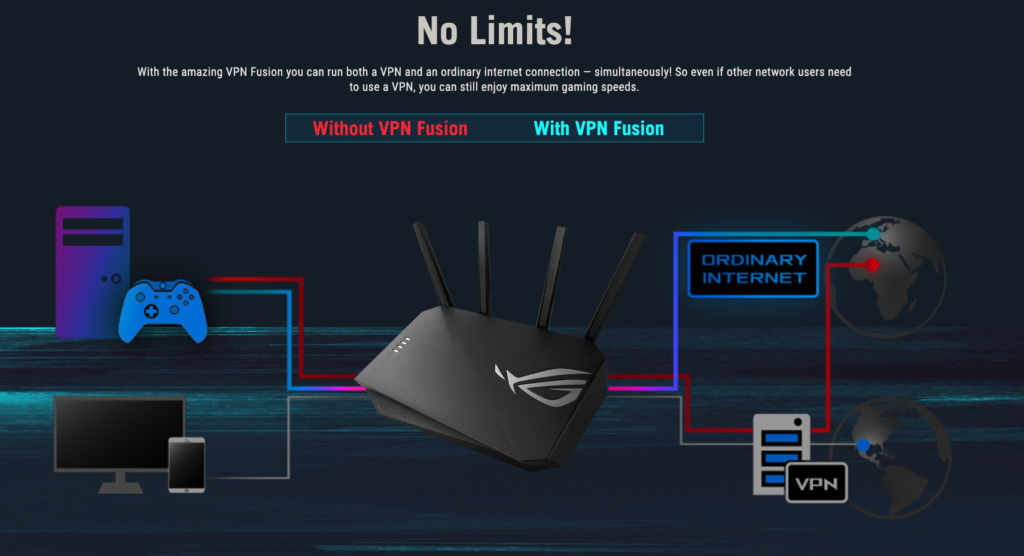Software features
The Asus Networking Division offers routers for just about every application and environment. Whether you’re looking for an affordable WiFI router or as an avid gamer, you can’t do without RGB LED lighting. The same is true if you need to cover a larger area, for example a house, for which Mesh solutions are already needed, and it is the AiMesh function that is one of the main strengths of this manufacturer’s routers.
Asus Web GUI
The basic environment used to set up and control Asus routers is a web-based one. The vast majority of settings and options are identical across models, differing for example in the presence of features associated with the USB port, which in our tested trio, only the gaming GS-AX3000 has. You can also see the longer side menu, which also has gaming features that the remaining pair don’t have. A departure from the traditional blue environment is the background theme on the GS-AX3000 ROG Strix. In general, the web environment is very clear and offers a lot of features and settings, which we’ll take a brief look at.
Asus Router app
Okrem webového prostredia môžete tiež používať mobilnú aplikáciu Asus Router, ktorá je dostupná pre Android aj iOS. Drvivú väčšinu nastavení viete ovládať priamo v nej a prakticky nikdy tak nemusíte využiť webové rozhranie. Platí to aj pre prvotné spustenie a inštaláciu routra, aj to je možné vykonať len za pomoci aplikácie.
Another advantage is that you can control your router without having to create an Asus account. The app also offers a number of useful tips, tricks or tweaks, and you’ll see a number of screenshots from it below. While testing the trio of routers, I only came across one instance where the app wasn’t enough and I had to use the web interface. This was in the case of manually changing the RT-AX55 to an AiMesh Node after a reset.
AiMesh
Perhaps the most important and interesting feature that Asus routers offer is AiMesh, which is, in brief, a system that allows you to connect multiple routers into a single network, with one of them being the main router, and the others acting as nodes. For the user-client, this network pretends to be a single unit and, importantly, automatic roaming to the router with the stronger signal is provided.
Such mesh solutions are also offered by various competitors, but what is unique about the Asus solution is that the routers do not have to be identical at all. So you don’t have to buy them in one package as two or three pieces of the same type. For example, you can use your existing router and buy a second one, according to your needs.
The initial investment can thus be easily spread over time according to your needs and requirements, and this solution also allows for gradual network upgrades, for example from WiFi 5 (802.11ac) to WiFi 6 (802.11ax) or the newer WiFi 6E and in the future WiFi 7, etc. In the gif above you can see the process of adding the RT-AX55 to the ZenWiFi AX Mini network as an additional node. Also note that the node can be connected via WiFi but also by cable, which can be seen in the Uplink type parameter.
AiProtection
Security is important when browsing the internet, and this applies against both short-range and long-range attacks. No one wants their neighbours snooping on their local network or downloading a virus from a dodgy site. Asus routers therefore offer AiProtection, which in cooperation with Trend Micro offers lifelong, real-time protection that acts as an additional firewall, and in the app you can analyze your security level and fix any weaknesses such as weak passwords, disabling certain features, etc.
Parental Control
Protecting children on the Internet is certainly a priority for every parent, and Asus routers therefore offer parental control features that allow you to block certain content sites, especially pornography or gambling.
Dual WAN
Another feature normally found in Asus routers is the dual WAN feature, which allows you to use a specific port as an additional WAN to provide a fail-safe when you lose connectivity from the main WAN or vice versa to share the network load between the two ports.
Gaming features
Gaming routers offer additional features to enhance the gaming experience by prioritizing gaming packets or mobile device, or port forwarding and different gaming profiles. For example, the GS-AX3000 also offers Gaming Port Prioritization, so the port selected and the device connected to it will be prioritized for a faster and more stable connection.
USB
Of the three routers tested, only the GS-AX3000 offers a USB port, thanks to which you can access a number of useful features such as sharing to a local and remote server, the ability to print over the network, connect a mobile modem or set up backups, including using Time Machine.
WiFi settings
Control of channels, bandwidth and signal strength cannot be missing and Asus serves them up to you on a silver platter. Beware, however, of the 160 MHz band, which must be enabled manually, as it is disabled by default.
VPN Fusion
Another interesting feature is VPN Fusion, which solves the primary problem of VPN usage, which is slower connections. With VPN Fusion, you can use a secure VPN connection for clients who need it and bypass it for a faster, direct connection to the internet.
WAN and LAN aggregation
Select Asus routers allow you to connect a WAN and LAN port or a pair of LAN ports to achieve double the speed to an end device, such as a NAS.





